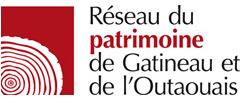What does city densification mean for heritage conservation?
This was one of the questions explored at the Vivre en Ville conference held by the Aylmer Heritage Association at La Basoche on Thursday, December 1, 2022. Valérie Ebacher (Conseillère – aménagement et urbanisme), and Catherine Craig-St-Louis (Coordonnatrice – aménagement du territoire et urbanisme), presented on behalf of Vivre en Ville, an urban strategy organization. The presentation focused on the ways in which well-planned densification strategies can support thriving cultural spaces.
Densification is a loaded topic when it comes to heritage conservation. Often it can be associated with the loss or devaluation of heritage buildings and historic spaces. However, the conference explored ways in which communities can leverage densification in their neighbourhoods to promote walkability and create dynamic cultural spaces to increase access to culturally important areas. The presentation explored whether densification projects are perhaps rejected by communities because: a) there is a concern for a loss of character of the neighbourhood, or b) there is a concern about the quality of the project? Or c) all of the above!
The other side of the urban planning coin, according to Vivre en Ville, is urban sprawl. However, sprawl does not necessarily spare heritage buildings, and can contribute to a lack of municipal action and innovation to optimize existing neighbourhoods.
One pertinent question posed was, “what will be considered heritage in 100 years?” It can be difficult to imagine buildings made today that will stand a long test of time. However, communities will be instrumental in ensuring that what we build today will contribute to the cultural vitality and wellbeing of future generations. When we consider densification, including the inevitable need for affordable housing and additional infrastructure such as community centres, clinics, and commercial spaces, how may we position our heritage buildings as critical hubs around which well-integrated living spaces can grow? If heritage buildings are crucial for remembering our past, what role can they play in building our future?
Something that came to our attention was the “ripple effect” of urban planning: When a city does not use good urban planning strategies, it pushes out residents and negatively affects the quality of the urban environment in nearby towns, and so on. Therefore, municipalities that have densification “best practices” in their toolkit will be the most prepared for success. The questions have shifted from, “when and where will densification happen?” to, “what is good densification and how is it achieved? What does good integration look like?”
While the answers are often unique to the buildings, spaces, and communities in question, exploring these questions can help us to better prepare for the future of our built heritage.
The event welcomed a well-rounded group of participants, including municipal councilors, Ville de Gatineau employees, and members of the APA and other local residential associations. We were also joined by 3 helpful student volunteers from the local high school. Thank you to all who attended the event!

